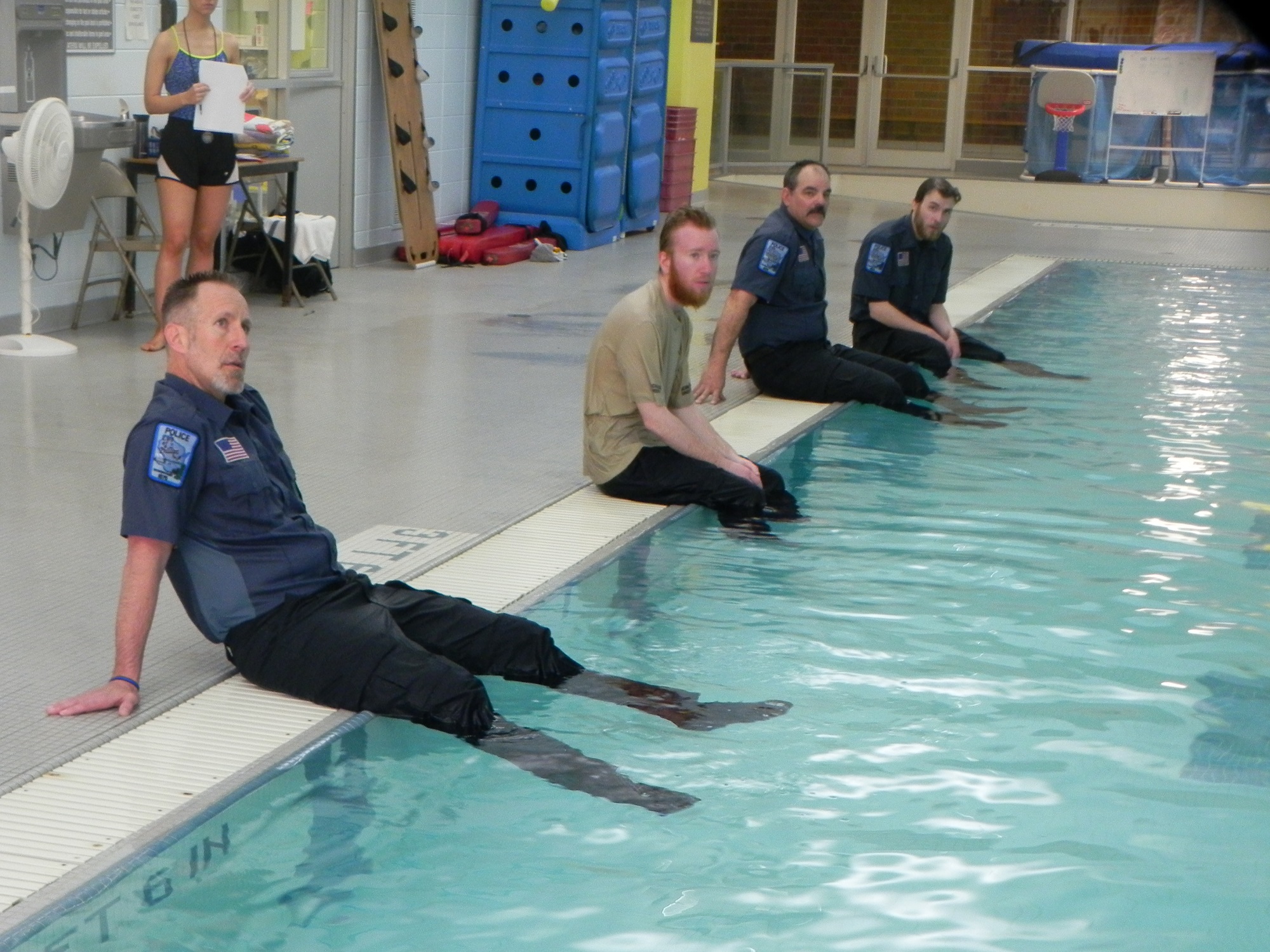The fire department in the rural area served by the Phillips Community Pool is all volunteer, so it generally takes a while for them to gather and get to a scene. This won’t work in a drowning emergency, so police officers and sheriffs usually are the first to reach the site.
This was well-known among the aquatics team, but then staff heard of a police officer on the East Coast who drowned attempting to save some teens. They worried for their local officers and the potential drowning victims they would try to save.
The area has 352 lakes, totalling 18,000 acres of water, in addition to a thriving tourism scene. So the risk for incidents only promises to increase.
In the past, police officers and sheriffs have been advised against going in the water in such instances. Squad cars are even outfitted with throwing equipment, but not personal rescue equipment, further discouraging them from jumping in.
But in many cases that falls on deaf ears. “Officers want to help people,” says Hannah Koller, aquatics director of the Phillips Community Pool in Phillips, Wisc. “You may say ‘Don’t do this. It’s dangerous,’ much like telling a firefighter not to run into a burning building. But we’ve heard where they’ve done it [anyway], just because they have the desire to help.”
So Koller’s colleague, Christian Markle, suggested that the facility staff train local police officers and sheriffs how to perform rescues safely. The Law Enforcement Water Safety program would help protect officers and those they’re trying to help.
Realistic training
“The goal was to stress that attempting an in-water rescue is a decision that should not be taken lightly,” Koller says. “The secondary focus was providing training for the officers who would choose to enter the water in an emergency, that they could do that as safely as possible.”
To drive home this point, instructors explained that even trained lifeguards find rescues difficult without in-water equipment, and that they avoid entering the water without it.
“That was a moment when … they said, ‘I thought I definitely would enter the water before, and now I’m giving it a second thought,’” Koller says.
To help them avoid jumping in if they can, the instructors showed how to properly use the throwing equipment in their vehicles, as well as the ring buoys they might find in open-water settings.
To make the training as realistic as possible, the team has officers jump in the water in their uniforms, boots and equipment. Then they do laps. “We do that so we can emphasize just how much clothing can affect their swimming, because many don’t realize that,” Koller says.
They are taught how to safely perform rescues from inside the water, practicing with lifeguards, learning to use the rescue tube and other techniques. To prepare them for incidents where they become fatigued or need to stay in the water for a lengthy periods, they learn and practice survival swimming techniques and treading water.
Because squad cars did not have rescue tubes, officers were taught to perform contact rescues without one. “Some were able to do it quite well, some struggled more,” Koller says.
Proven benefits
In providing this instruction, the instructors had to know their limits and make those clear. In presenting this training, for instance, the aquatics team makes clear that it does not specialize in swift water training for flooding, nor does the instruction apply to apprehending an individual.
Instructors also left certain aspects of the strategizing up to the law enforcement agencies – things such as what to do with the equipment they have on their belts, where to take off their boots and other aspects of the process unique to the officers.
Where the training originally took place only in a pool, with waterfront scenarios simulated during a portion of it, the team eventually moved part of the training to open water.
Management at the law-enforcement agencies have seen the benefits of the training. They now are moving toward supplying squad cars with rescue tubes. Other local agencies are requesting the training for their officers.
Most importantly, last summer, mere days after the local sheriff’s office underwent a lake-front training, deputies were dispatched to a nearby waterfront and used the skills they’d learned. They credited the training with helping.
Keep the conversation going—sign up for our newsletter for exclusive content and updates. Sign up for free.



